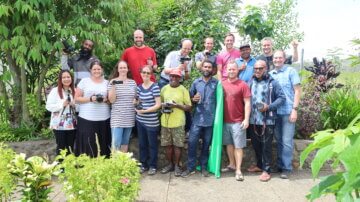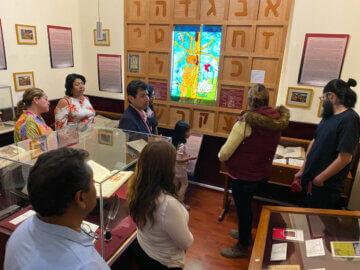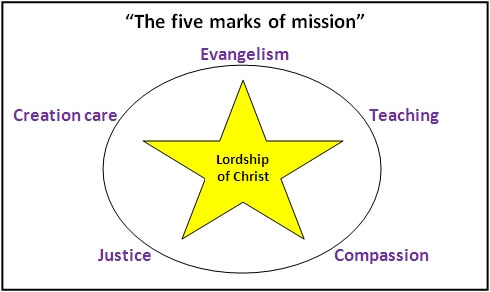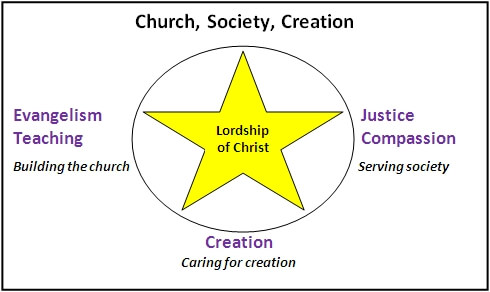Holistic Mission
Dr. Chris Wright from Wycliffe Global Alliance on Vimeo.
Monday, 7 May 2012: The second of three presentations by Dr. Christopher J.H. Wright to look!2012.
View the first and third presentations: Come in with praise; go out with hope (Sunday, 6 May 2012); The Church and Global Mission (Tuesday, 8 May 2012).
What is ‘holistic mission’? Where should we start?
When we consider what ‘mission’ is, we can easily fall into a trap. Either it is, in its entirety, ‘evangelism and discipleship,’ or it is ‘social justice’ with the former taking a back seat or being ignored altogether.
Biblically, mission is inherently holistic. Biblically, the Church exists in history for the sake of God’s global mission. Holistic mission is mission that is concerned about the whole scope of human need. But that begs a question: What do people really need? God’s “global mission” for the Church incorporates the whole Church to the whole world. But that raises the question: What is legitimately included in the mission of the Church?
The true starting point: the mission of God starts with God
What is the great plan and purpose of God? Paul expressed it succinctly in his letter to the Ephesians: “to bring all things in heaven and on earth together under one head, even Christ” (Eph 1:10b). God’s aim, as Dr. Wright put it, is “to redeem the whole of creation, broken by sin and evil, into the new creation, populated by the redeemed from every culture, through the cross and resurrection of Christ.” The whole counsel of God—the Scriptures from Genesis 1:1 to Revelation 22:21—reveal the arc of human history in light of God’s plan and purpose:
Creation – Fall – Redemption – New Creation
Five marks of mission
Many attempts have been made to define what God’s mission is. In 1984, the Anglican Communion published a declaration on “five marks of mission”: Evangelism, Teaching, Compassion, Justice and Creation care—all held together under the lordship of Christ. This conception has deep roots in the whole of the Bible, including the Great Commission. It might be diagrammed like this:
Another way in which this model can be pictured is to arrange the five points under three broader categories of Christ’s mandate to His people—Building the church, Serving society and Caring for creation:
Building the church
Jesus now moves on to the matter of building his Church: “Therefore” (now that the issue of authority has been settled) “go and make disciples of all nations, baptizing them in the name of the Father and of the Son and of the Holy Spirit, and teaching them to obey everything I have commanded you.”
Dr. Wright noted that, in Scripture, the word ‘Christian’ occurs only three times. But the word ‘disciple’ occurs around 237 times.
Evangelism
Evangelism, the first step in the disciple-making process, can be interpreted as “gospeling” or “good-newsing” to the world what God has promised and accomplished through Christ. But what is the place of this “gospeling” activity in the picture of holistic mission? Wright said there are two common traps into which we might fall. The first is to see holistic mission as including everything else except evangelism (a one-sided social gospel, if you will). The second trap is to view it as incorporating everything (including evangelism), but without integration. Wright called this the “bag of marbles” approach. It’s multiple-choice, a take-what-you-want-and-leave-the-rest philosophy.
Getting back to the wheel metaphor, we can see that the Lordship of Christ is central. It holds the wheel together and provides the power for it to meet the ground and move along it. This is a good picture of integral mission (another way of saying holistic mission). All parts are interconnected, each part has its function, and all working together move the Church forward. So, what does the fullness of evangelism look like as we speak of ‘integral mission’? It is both proclamation and demonstration of the good news.
Teaching/Discipling
When Jesus walked the earth and chose 12 men to follow him, he spent the best part of three years doing one thing: teaching. And in doing so he was following an age-old biblical/rabbinical tradition. Dr. Wright noted Andrew Walls’ observation that the Old Testament narrative of God’s dealings with Israel was the “oldest and longest program of Theological Education.”
The Apostle Paul demonstrated all the important aspects of teaching (disciple making) in the course of his long ministry. Of course, as he traveled on his several missionary journeys, he preached the good news of Jesus Christ wherever he went. But that was not all.
- Having spent years in Ephesus teaching and training the believers, he was later able to declare to them, “For I have not hesitated to proclaim to you the whole will of God” (Acts 20:27).
- He spent time working intensively with other members of his mission team – Timothy, Titus and Apollos – including writing letters to them to remind them of all he had taught them and to encourage them in faithfulness.
- When the church at Corinth fell into factionalism, splitting over which leader they would follow, Paul powerfully admonished them concerning the importance of unity under Christ: “I appeal to you, brothers, in the name of our Lord Jesus Christ, that all of you agree with one another so that there may be no divisions among you and that you may be perfectly united in mind and thought” (1 Cor. 1:10).
- Paul was the author of a major portion of the New Testament. His writings reflect a strong concern that the people of God would grow—not in numbers—but in depth of knowledge, love, faith and obedience. In other words, Paul was concerned about our maturity in Christ.
“We proclaim him, admonishing and teaching everyone with all wisdom, so that we may present everyone perfect in Christ.” Col. 1:28
(The next article will summarize Dr. Wright’s final message to look!2012, which completes his thoughts on the aspects of Serving society (Compassion, Justice) and Caring for creation.)
Dr. Christopher J.H. Wright (Ph.D., Cambridge) is director of Langham Partnership International (John Stott Ministries). An ordained Anglican minister, he is also the author of many books, including "The Mission of God: Unlocking the Bible's Grand Narrative."
The latest
View all articles
03/2024 Pacific: Papua New Guinea
Informing, teaching, inspiring: PNG workshop teaches video storytelling for language communities
PNG workshop teaches video storytelling for language communities
Read more
02/2024 Global
Looking ahead at 2024
As the year unfolds, we marvel at the work of God in our rapidly changing world. And, we look forward to a number of gatherings and conversations intended to draw us together.
Read more
01/2024 Americas
Telling the Bible's Story
It may come as a surprise that a museum is among the Wycliffe Global Alliance organisations.
Read more


